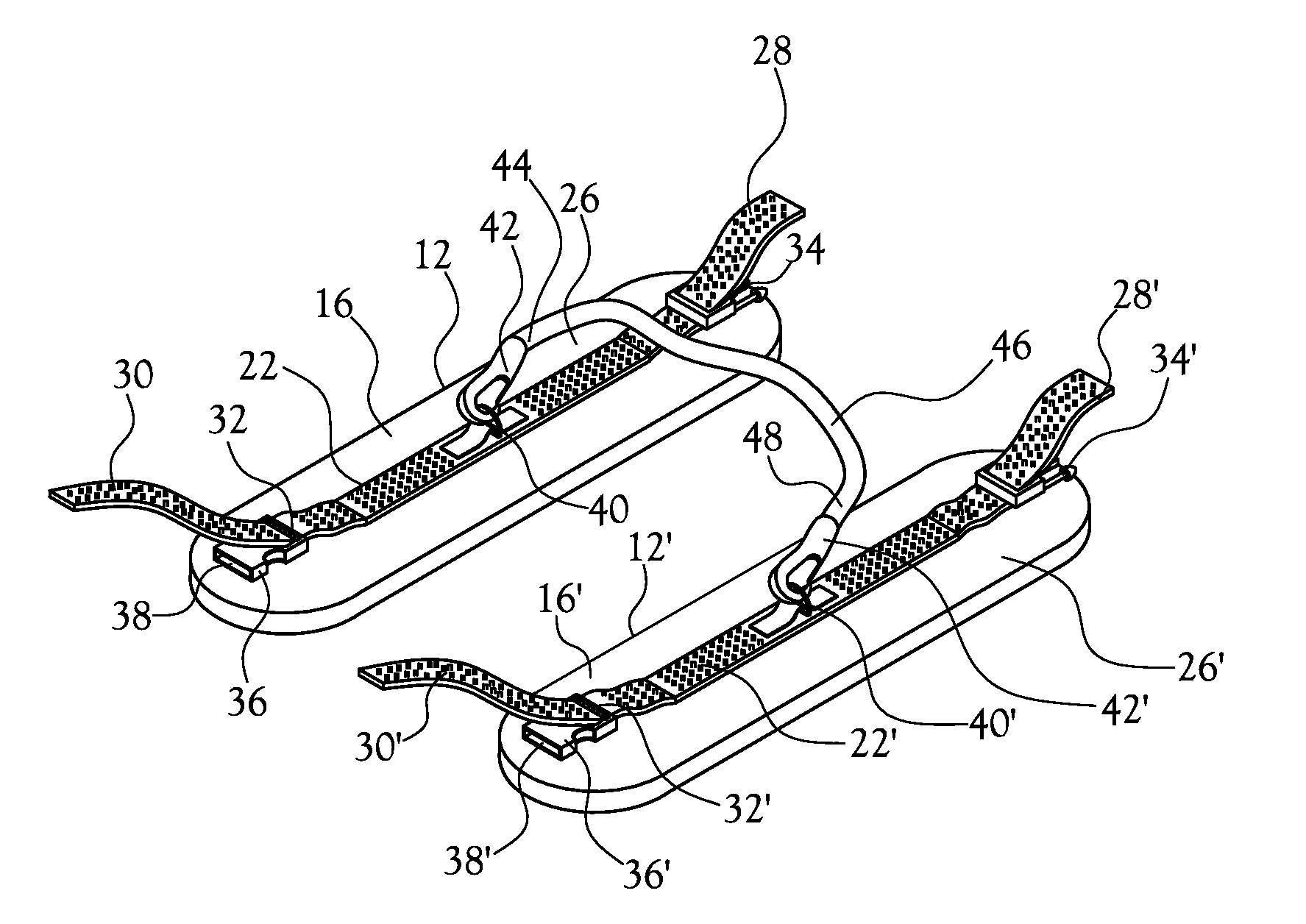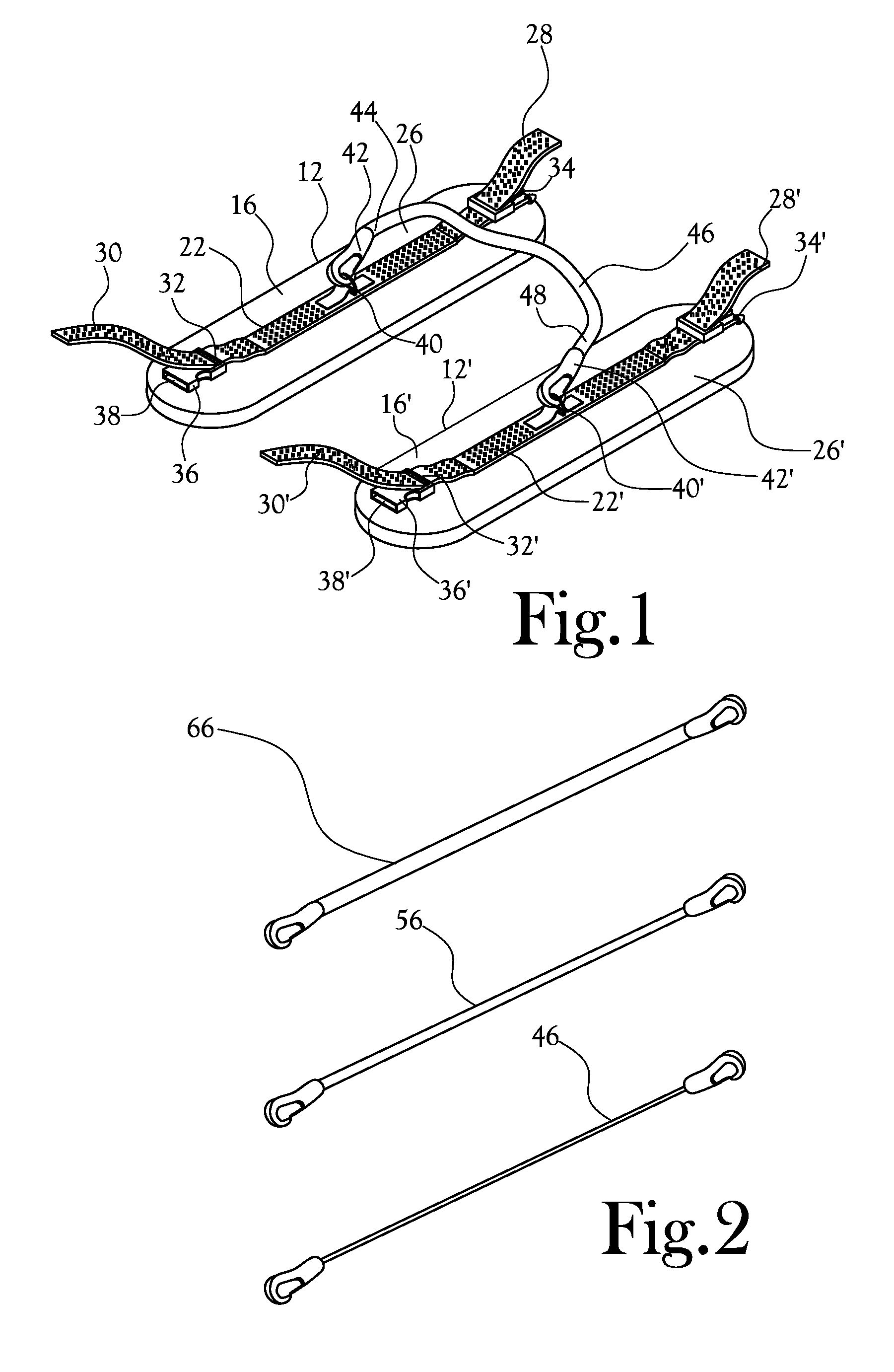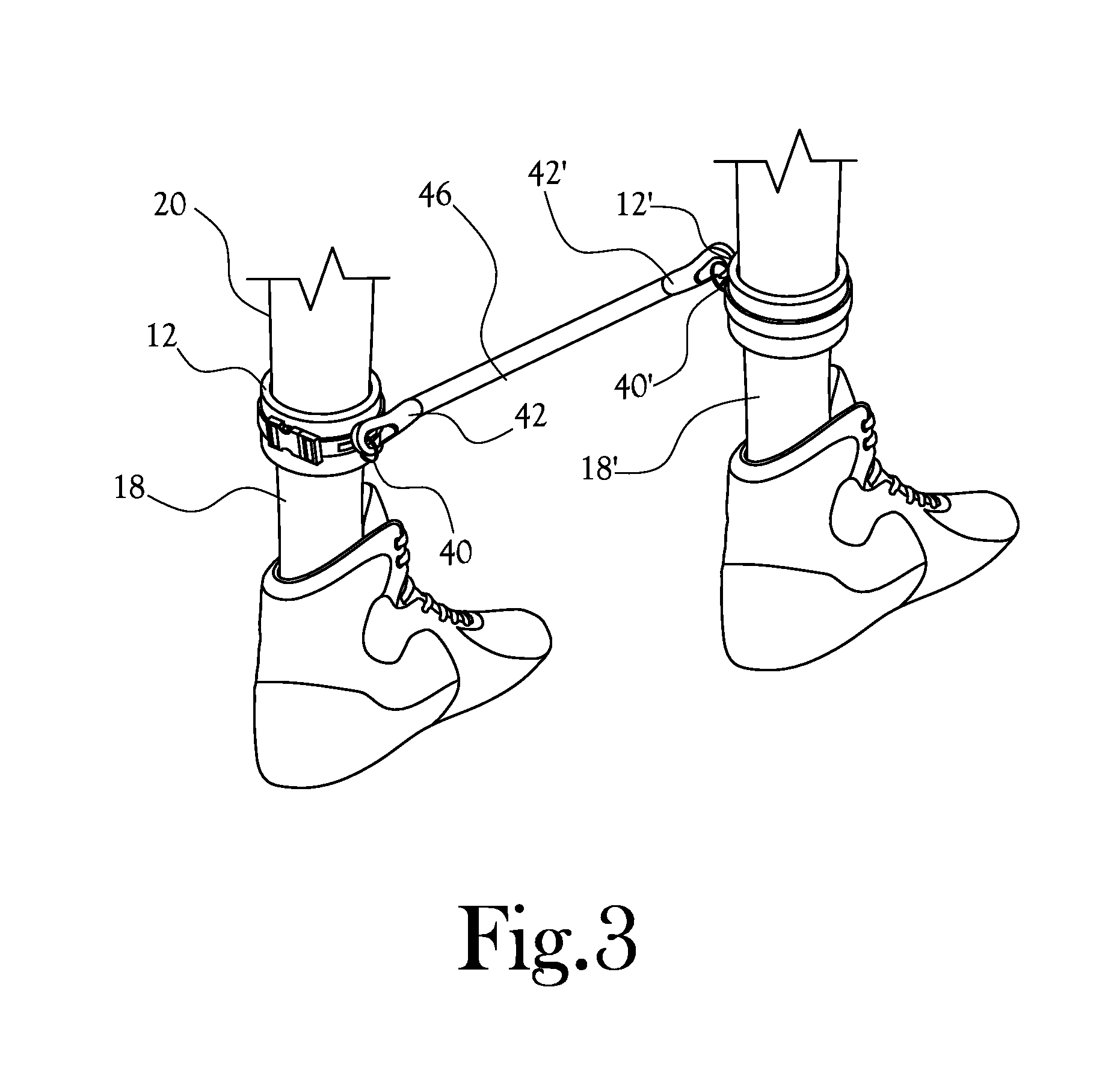Method and Apparatus for Athletic Training
a technology for athletic training and training equipment, applied in the direction of sport equipment, muscle exercise devices, gymnastic exercise, etc., can solve the problems of inability to optimize the speed (turn over rate) of the movement of legs, cords often break with undesirable, dangerous effects on one or both runners, etc., to achieve the effect of improving the turn over rate and the length of the stride of the runner
- Summary
- Abstract
- Description
- Claims
- Application Information
AI Technical Summary
Benefits of technology
Problems solved by technology
Method used
Image
Examples
Embodiment Construction
[0034]With reference to the several figures, one embodiment of the apparatus of the present invention includes first and second ankle cuffs 12, 12′ respectively, each of which is formed of a cushioned length of material 16, 16′, preferably of stretch resistant material, of a length sufficient to encircle the ankle area 18, 18′ of an athlete 20 (see FIG. 3). In the depicted embodiment, closure of the cushioned length 16, 16′ about the 18, 18′ of the athlete 20 is effected by means of a first strip 22, 22′ of hook and loop fastener material, for example, the material marketed under the trademark Velcro®, anchored to the outer surface 26, 26′ of the cuff 12, 12′, plus second and third strips 28, 28′ and 30, 30′, respectively, of hook and loop fastener material, fed through the male component 34, 34′ and female component 36, 36′, respectively, of a snap fastener 38, 38′ and back over the respective guide members 32, 32′ of the snap fasteners 38, 38′ to overlie the first strip of hook an...
PUM
 Login to View More
Login to View More Abstract
Description
Claims
Application Information
 Login to View More
Login to View More - R&D
- Intellectual Property
- Life Sciences
- Materials
- Tech Scout
- Unparalleled Data Quality
- Higher Quality Content
- 60% Fewer Hallucinations
Browse by: Latest US Patents, China's latest patents, Technical Efficacy Thesaurus, Application Domain, Technology Topic, Popular Technical Reports.
© 2025 PatSnap. All rights reserved.Legal|Privacy policy|Modern Slavery Act Transparency Statement|Sitemap|About US| Contact US: help@patsnap.com



